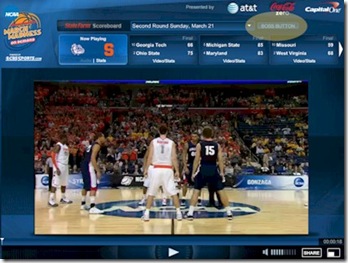A recent poll in the UK by SimplyHired showed that more staff wanted ‘work/life balance’ (36%) over a ‘competitive salary’ (31%). Also, the #1 vote getter was a ‘a job they love’ at 81% while a ‘pay raise or promotion’ only garnered 10%. The findings reinforce the business benefits of Dynamic Working in containing payroll costs while keeping staff productive and happy by introducing new ways of working that make their jobs more satisfying and flexible.
Month: March 2010
Boss Button
A week ago I attended the Women In Technology event ‘The Business Value of Social Media’ to see my friend Eileen Brown speak on exploiting social media. Women In Technology have a strong interest in both family-friendly work practices as well as knowledge economy trends. As a bonus, Euan Semple also spoke covering a range of business benefits to social media. The highlight of the evening for me was the quote on his slide by Peter Drucker…
“In the knowledge economy everyone is a volunteer, but we have trained our managers to manage conscripts.”
This insight gets at the heart of Dynamic Work and its productivity benefits. Many companies I speak recoil at the thought of more flexible work practices because they look at their workforce through the lens that everyone is a conscript. They think that as long as you keep and eye on everyone’s activity and crack the whip, the people should feel lucky to have a job and everything will go smoothly.
What that naive presumption misses is how much variation in work output and quality one can manifest in a knowledge worker role without a sign. In short, the unmotivated knowledge workers can hit your business where the marks won’t show. If you someone digging ditches or hammering rivets, then it is quite obvious when a slacker is not throwing dirt or cracking a girder. But it you are processing information, creating content, using systems, solving problems, writing code, then the most observant manager in the world can’t really tell the difference between a diligent worker beavering away from an indolent daydreamer staring blankly at their screen.
And for the more proactively unproductive, there are tools and technologies to help them be even more delinquent. My favourite is CBS Sport’s March Madness’ ‘Boss Button’.
The issue is sort of the converse of the ‘Quality Time’ which is about creating the Dynamic Work environment which does maximise the true productivity. ‘Boss Button’ is about the futility of trying to minimise the loss of productivity through conventional methods in the knowledge economy.
Healthier and Happier
One of the major areas of benefit from Dynamic Working, along with saving money and helping the environment, is boosting staff welfare. The most direct benefits involve increased satisfaction, work/life balance, and reduced time lost to commuting. All of these benefits should lead to healthier, happier workforce. As it turns out, the UK non-profit research organisation The Cochrane Collaboration recently concluded a study which validated the ‘healthier’ hypothesis with their study titled “Flexible working conditions and their effects on employee health and wellbeing” which was released last month.
“Overall, the findings tentatively suggest that giving workers more choice or control over their working patterns is likely to have positive effects. The researchers found evidence that self-scheduling of shift interventions and employee-controlled partial/early retirement improved health outcomes, including systolic blood pressure and heart rate, tiredness, mental health, sleep duration, sleep quality and alertness and self-rated health status. Improvements were also noted in well-being, such as co-workers' social support and sense of community.”
The rising costs of health care is probably the most prominent issue in American politics at the moment and concerns about the NHS here in the UK are also quite high, especially as both countries face aging populations with increasing incidence of lifestyle health problems. Dynamic Work can be a part of the solution to this intractable and costly problem.
Crofting
Dynamic Work asserts that how one brings together different people and roles as well as physical assets can be very flexible. But can the actual work content of an individual person be flexible? Or does their role or contribution have to be a constant unit which can then be brought into the mix of the total output in a range of flexible ways?
Katie Ledger talks about ‘Portfolio Working’ and Hugh MacLeod talks about ‘crofting’ which are both examples of how individuals can make their own careers and work content more modular and flexible…
“My paternal grandfather was a Scottish Highland “crofter”. He lived on a “croft” i.e. a very small holding of land, where he raised sheep and grew potatoes. I used to spend my summers there as a boy. We were very close. Crofting is a good life, but not a very financially rewarding one. It’s very self-sufficient, though. The interesting thing for me looking back, is that crofters never did “just one thing”. Every day they had something else going on. One day it might be sheep. The next it might be a job working on the roads for the local council. I knew one crofter who drove the mail van. Another who ran the local post office. They would do their jobs, but after work they’d still have their sheep, cows and potatoes to attend to.”



